
As summarised earlier, the Australian Bureau of Statistics (ABS) today released labour force data for the month of September, which registered a 0.1% seasonally-adjusted fall in the headline unemployment rate to 5.6%. The result beat analysts’ expectations of unemployment remaining at 5.8%.
Total employment rose by a seasonally adjusted 9,100 jobs, with full-time jobs rising by 5,000 to 8,133,700 and part-time employment increasing by 4,100 to 3,512,100. However, aggregate monthly hours worked fell by 6.4 million hours to 1,641.5 million hours.
The headline unemployment rate was also flatterred by a 0.1% fall in the participation rate to 65.0% (see below charts).
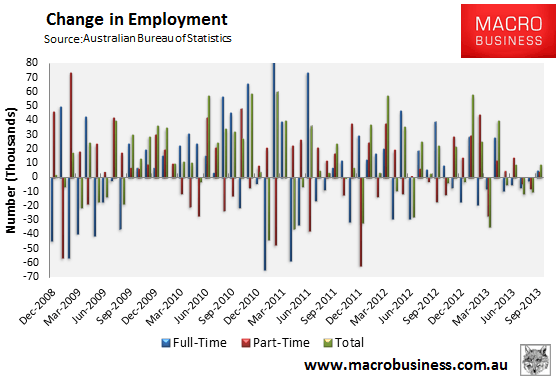
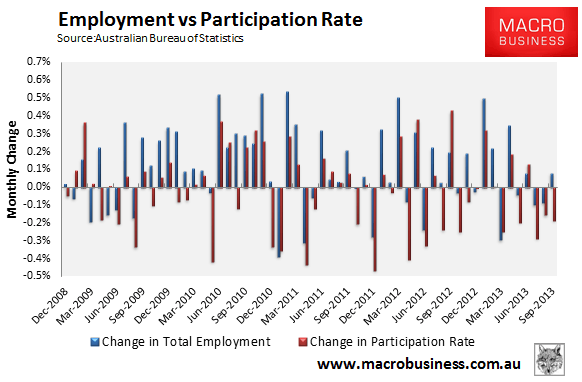
Total employment has basically flatlined since the beginning of the year (see next chart).
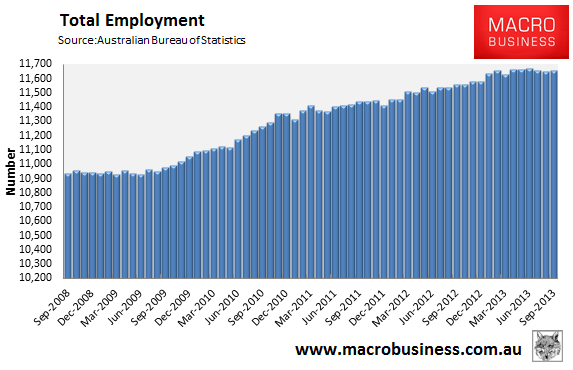
Australia’s employment market continues to rebalance away from the Western Australia, although the loss of jobs in South Australia remains a concern:
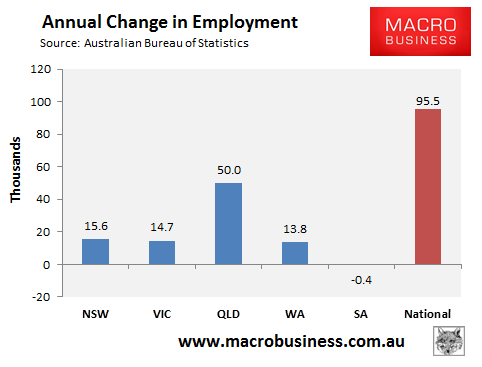
The variance of unemployment rates across the nation is also fairly narrow, with Western Australia and Tasmania the clear outliers:
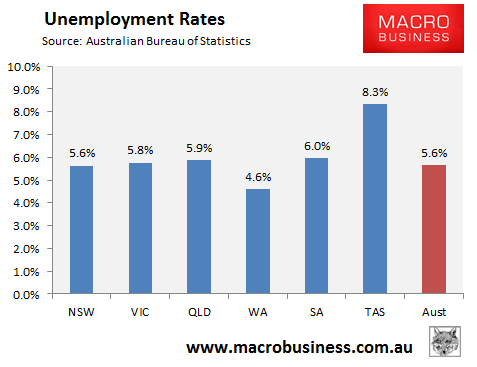
The state seasonally-adjusted figures are notoriously volatile and subject to a big margin of error. As such, the below chart shows the ABS’ trend unemployment rates, which shows Western Australia with the lowest unemployment, Tasmania and South Australia with the highest (and still deteriorating), and the others bunched together around the national average:
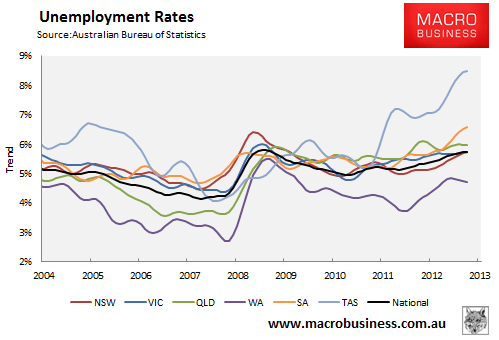
A negative from this release is that the aggregate number of hours worked fell by 0.4% nationally in September, although it is up by o.6% over the year:
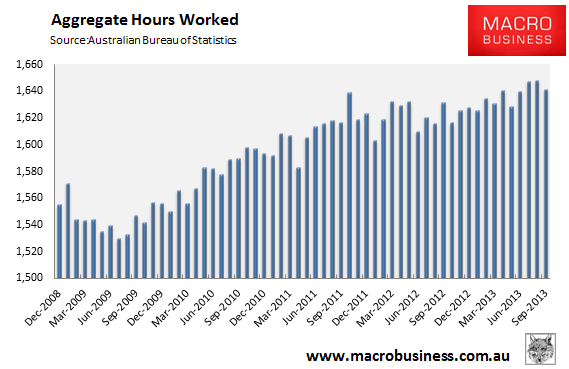
The growth in annual hours worked seems to be heading down again across all major capitals after bouncing recently:
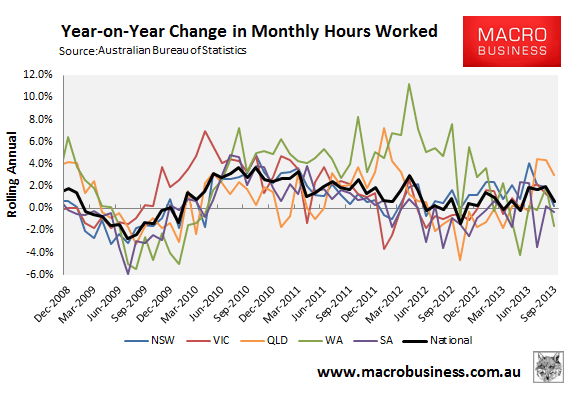
However, the below chart, which tracks the changes on a trend basis, paints a different picture. In particular, Western Australia’s labour market appears to be recovering, Queensland’s looks strong, and South Australia’s remains weak:
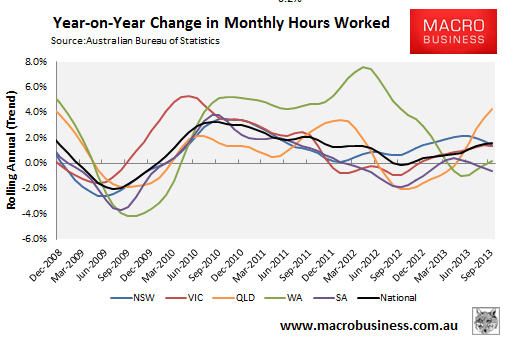
The weakening labour market, combined with Australia’s ageing population, has seen the employment-to-population ratio fall to its lowest level in 7.5 years (see next chart).
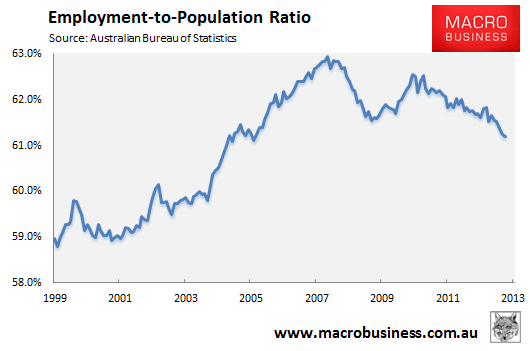
And to wrap up, the below chart summarises the annual change in the key employment aggregates:
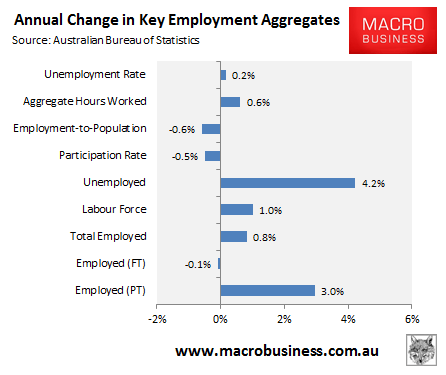
Overall, you can see from the above chart that the Australian labour market remains soft, with jobs growth still well below the level required to absorb population growth (with all of the growth in employment over the past year part-time), and both the employment-to-population ratio and participation rate continuing to trend down. On the other hand, growth in aggregate hours worked remains positive and the labour market is more balanced than was the case previously, with less reliance on the mining sector to drive jobs growth.

